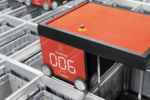Made in the Hunter, for the world
HMA announces 2023 finalists and presentation night Mid-September put a spring in the step of Hunter manufacturing. Prime Minister Anthony Albanese visited Varley Engineering at Carrington to make a significant announcement regarding the National Reconstruction Fund, and Hunter Manufacturing Awards announced its 2023 finalists. While Mr Albanese was suiting up in Newcastle’s traditional industrial heartland with safety glasses and a personalised rail safety vest to reboot manufacturing, selected HMA finalists were checking their black-tie arrangements and after-five options. HMA will announce the winners of its prestigious accolades at a gala event on Friday 20 October at NEX, in Newcastle. The awards inspire and encourage vibrant and enduring manufacturing and the event shines a light on the region’s leaders and innovators making a mark in their fields. The 2023 awards theme is “made in the Hunter, for the world” and HMA chair Jacqui Daley says it is important to recognise the growth of manufacturing in the region and to celebrate innovations and commitment as companies make a global push. “Hunter companies are transforming traditional manufacturing processes,” Ms Daley says. “Many are now increasing the levels of design for technologically complex, innovative, reliable, affordable, and available products, which are better, more sustainable, and solve a variety of society’s problems. It enables them to compete globally.” Many of this year’s finalists are first timers, such as Hey Zomi, Herb Urban, and new Hunter start-up No Thru, while others are “old hands”, such as Hedweld, Resourceful Living, Whiteley, and Tomago Aluminium. The No Thru interlocking security system is an innovative reimagining of the traditional temporary construction fence. Designed to address the shortcomings of current options, No Thru prioritises enhanced security, safety, and streamlined installation efficiency. “Our main target markets are construction, building, and hire companies,” says No Thru founder James Vadas. “This system eliminates […]










